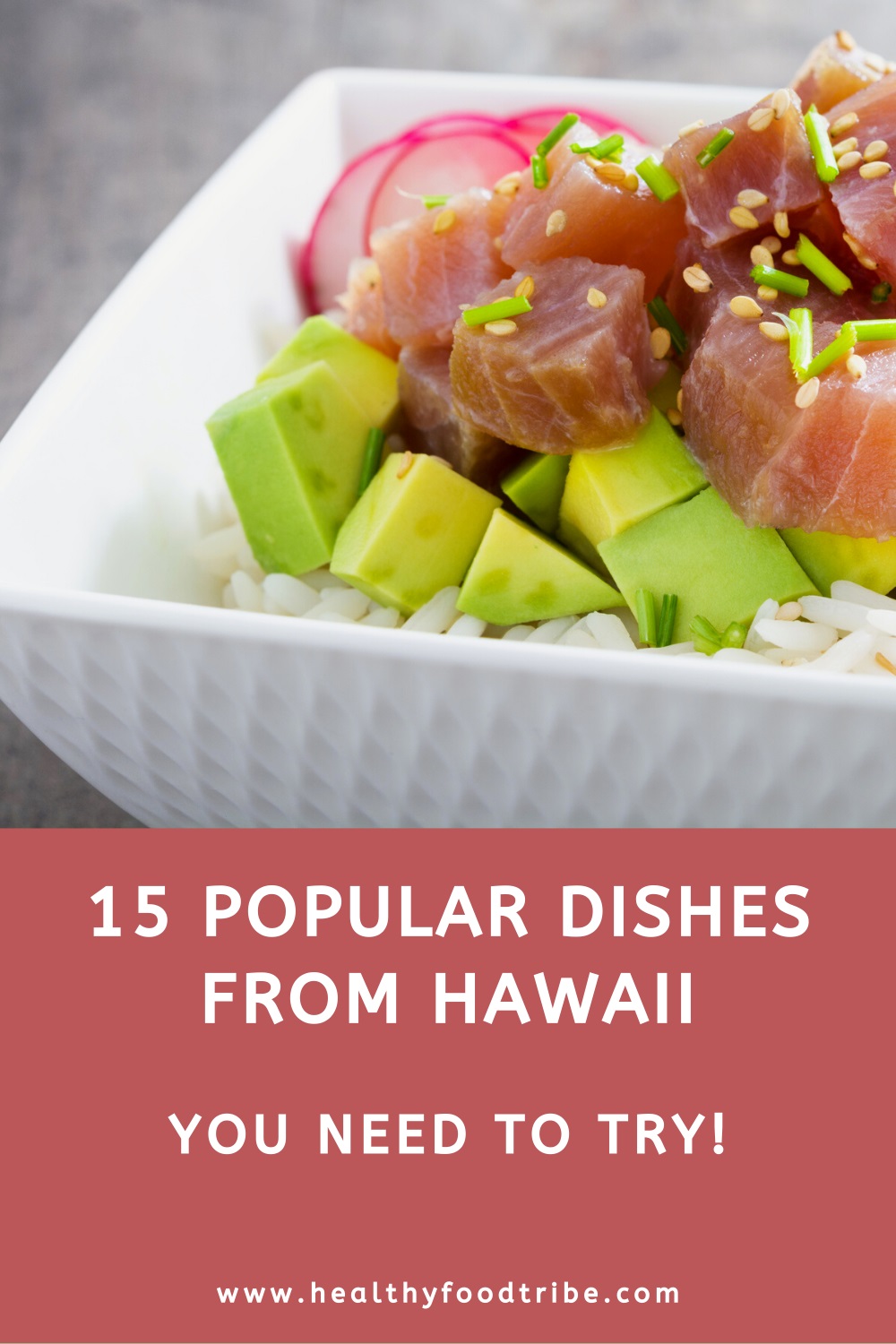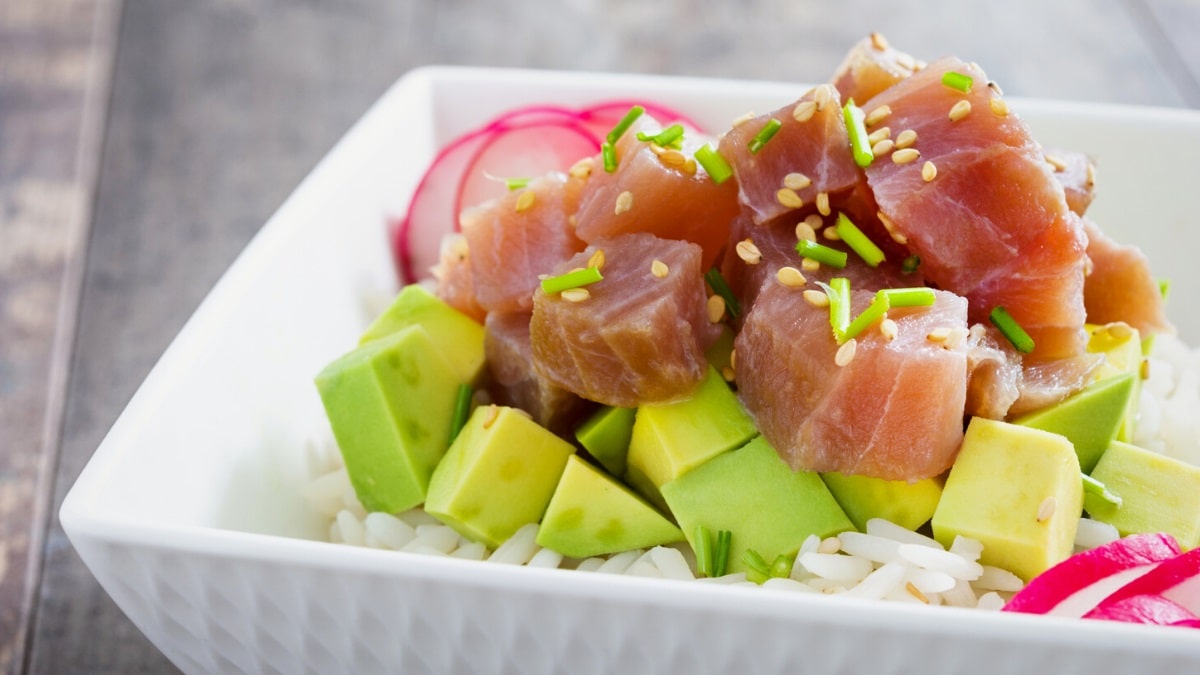Last updated: February 6, 2024
This guide shares 15 of the most popular Hawaiian dishes and foods, from fresh raw fish and tasty cooked meat to colorful desserts and delicious snacks.
The Hawaiian islands are inhabited by an eclectic mix of cultures. These cultures have long influenced the cuisine here to create unique dishes that aren’t found anywhere else in the world.
With Native Hawaiian, Asian, and even Portuguese influences, these dishes have a flavor and tradition all their own. Below, you’ll find my favorite 15 Hawaiian foods and dishes that I believe you should try now!
1. Loco Moco
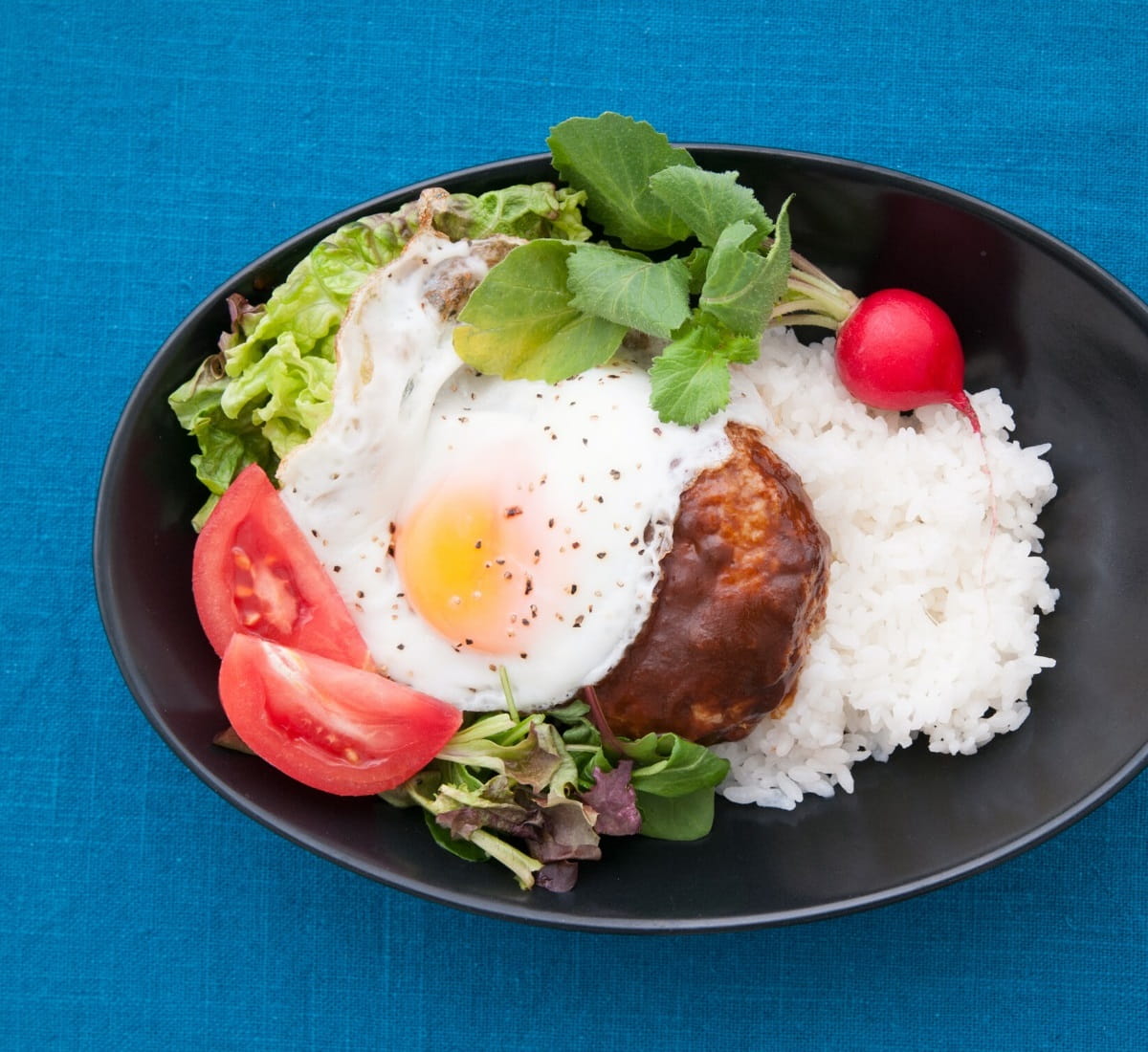
Arguably one of the most Hawaiian dishes ever, given that it is unlike anything else found around the world, is loco moco. This unique dish features a base of white rice topped with a hamburger patty, a fried egg, and brown gravy.
The dish was first created in Hilo, Hawaii in 1949 after a group of teenagers entered a restaurant looking for something cheap but filling. The dish was named for one of the teenagers whose crazy antiques and Spanish class influence earned him the nickname Loco.
“Moco”, derived from the Hawaiian pidgin word “mo”, meaning “more”, was tacked on because it made the dish sound good.
Since its creation, word of this dish has gotten around. It is now featured in restaurants across the islands. You can find it in its original, budget form, and in elevated iterations worthy of finer dining establishments.
2. Spam Musubi
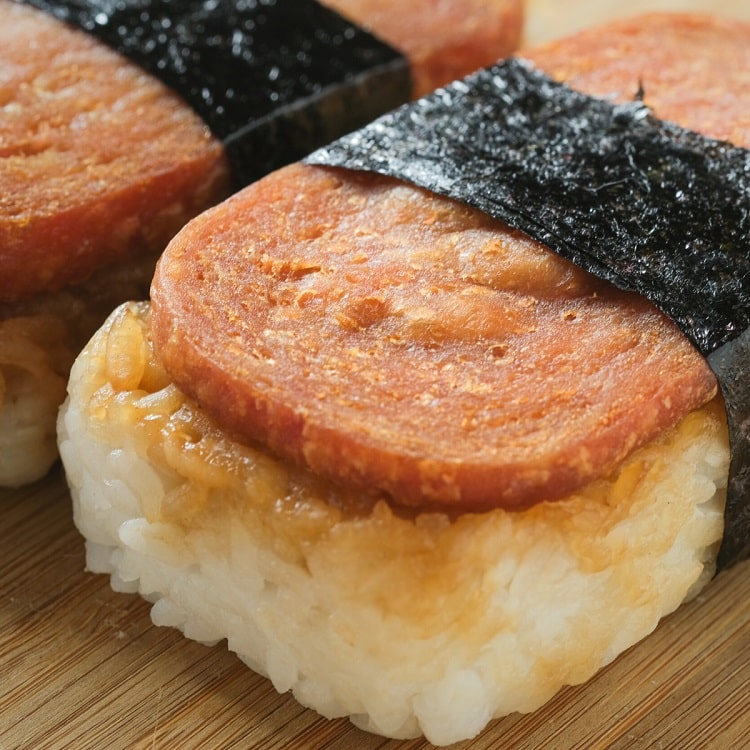
Spam musubi (pronounced moo-sue-bee) is a portable snack with influences from Japanese and Guamanian cuisine. Like traditional onigiri from Japan, spam musubi features a smashed rice ball wrapped in nori (dried seaweed). But this version also features a slice of spam (or two!).
You can think of spam musubi as cheaper, more portable sushi. But this easy snack doesn’t require any dipping sauce or wasabi. The seasoned spam packs more than enough flavor all on its own.
How spam musubi came to be is highly contested. There are stories of it being conceived of on Kauai in 1982 and in Honolulu sometime in the 1980s.
All we know for certain is that this Hawaiian favorite is easy to find today. It is featured in displays next to the register at just about every convenience store in the state.
3. Poke
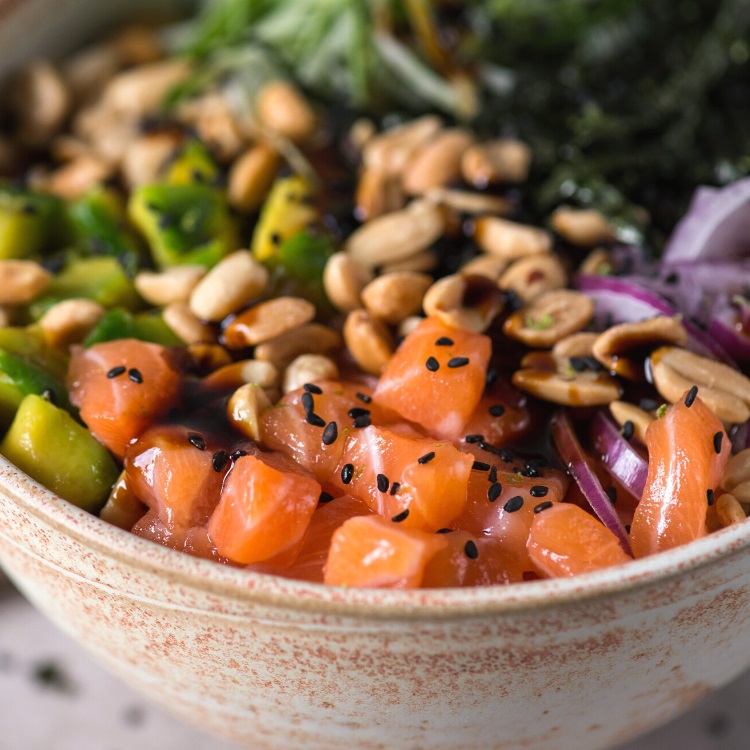
Poke (pronounced poe-kee) is hands-down the most well-known Hawaiian dish. This classic features diced raw fish seasoned with Hawaiian salt and seaweed. In the islands, the dish traditionally includes ground candlenut meat, as well.
This dish started as a way for fishermen to use up the cut-offs from their catch. The snack quickly caught on and became a state-wide staple in the 1970s.
Poke is now common in mainland restaurants, but if you’ve never tried it on the islands, you’re missing out. To truly capture the flavor of this uniquely Hawaiian dish, you really have to be in Hawaii.
Read my guide to the best fruits from Hawaii with lots of delicious and exotic treats, including tips on where to find and how to eat them.
4. Saimin
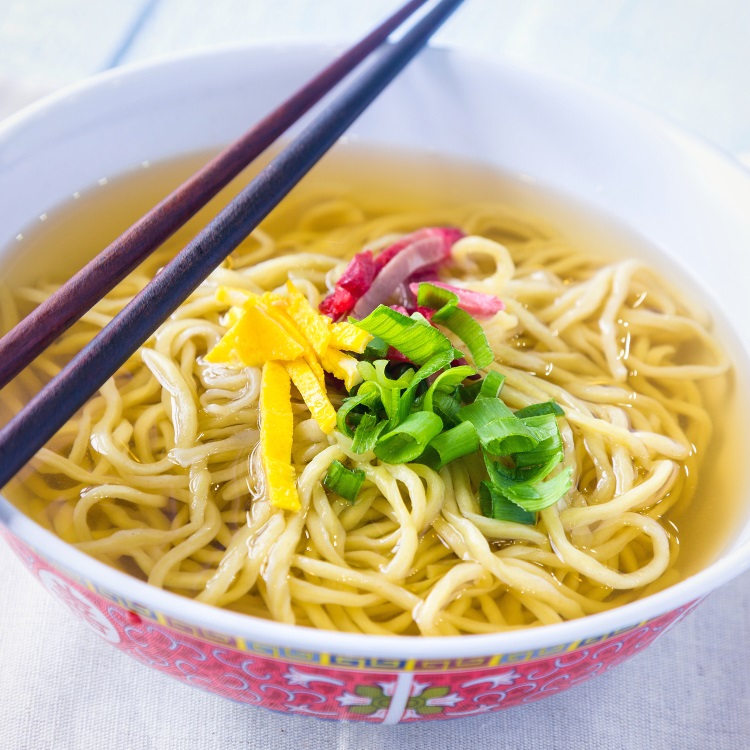
Saimin (pronounced sigh-min) is a popular Hawaiian noodle dish with deep Japanese ties. It consists of wheat egg noodles served in a Japanese-style broth, known as dashi, and garnished with green onions. Other toppings include spam, boiled egg, nori, and kamaboko, a type of condensed fish paste.
Despite being more Japanese in flavor, the name for this soup is derived from Cantonese and came to Hawaii with Chinese immigrants. In Hawaiian pidgin, saimin is now used to refer to any kind of noodle soup.
The exact origins of saimin are unknown, but a popular theory puts the beginnings in the plantation fields. Asian laborers of varied backgrounds would often come together to contribute prepared ingredients to a communal pot. The results would have often looked a lot like a bowl of saimin.
5. Poi
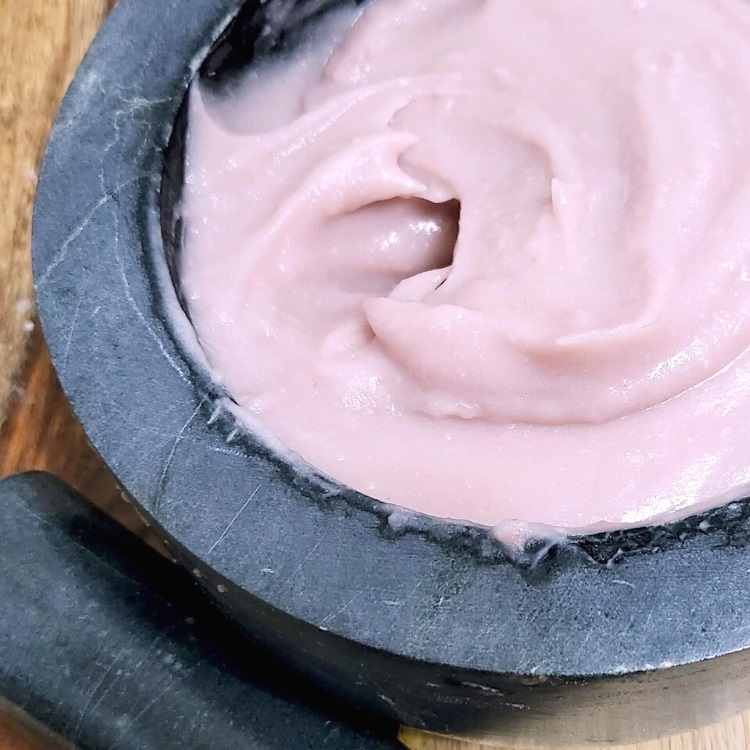
Poi (pronounced poy) is a traditional dish that dates back to before Polynesians landed on the Hawaiian islands. It is made from taro corms, starchy tubers the Polynesians brought with them wherever they sailed.
Poi is prepared by mashing cooked taro into a paste, adding water as needed to process. The white corm is speckled with purple dots, which leads to a product that is uniformly light pinkish-purple.
Adding water before consumption gives poi its final texture. Locals judge the runniness of poi based on how many fingers are needed to eat it; one, two, or three, with the former being the thickest.
When eaten fresh, poi has a subtly sweet flavor. When left to ferment, it tastes somewhat like yogurt. Either way, it is eaten as a side dish and is a common feature of plate-style Hawaiian lunches.
Keen to make this Hawaiian dish yourself? Check out this poi recipe from Taste of Home.
6. Malasadas
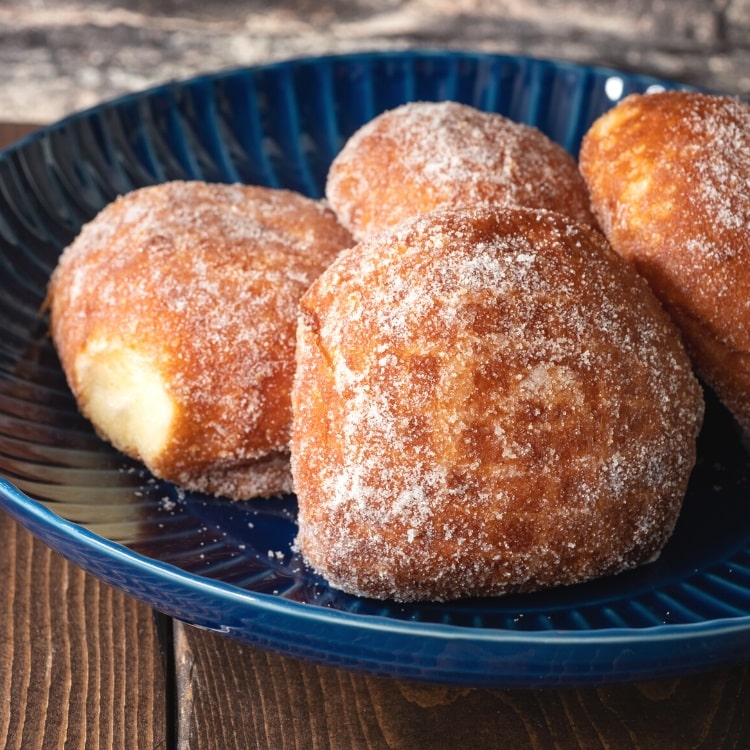
Malasadas are a type of fried dough dessert more common in Hawaii than donuts. These dough balls are typically flavored with lemon and covered in cinnamon sugar. In Hawaii, they often feature cream fillings such as pineapple, guava, and coconut.
These tasty desserts originated in Portugal. They made their way to Hawaii when laborers from the Portuguese islands of Madeira and the Azores were brought to Hawaii to work the plantations. In their homeland, malasadas are not usually filled as they sometimes are in Hawaii.
While a favorite dessert on the islands, these treats are not isolated to just this state. They are popular in the South and on the East Coast in areas with a lot of Portuguese influence. In both Hawaii and the states, Mardi Gras is often celebrated with malasadas in the Catholic tradition of using up all the butter and sugar before lent.
7. Luau Stew
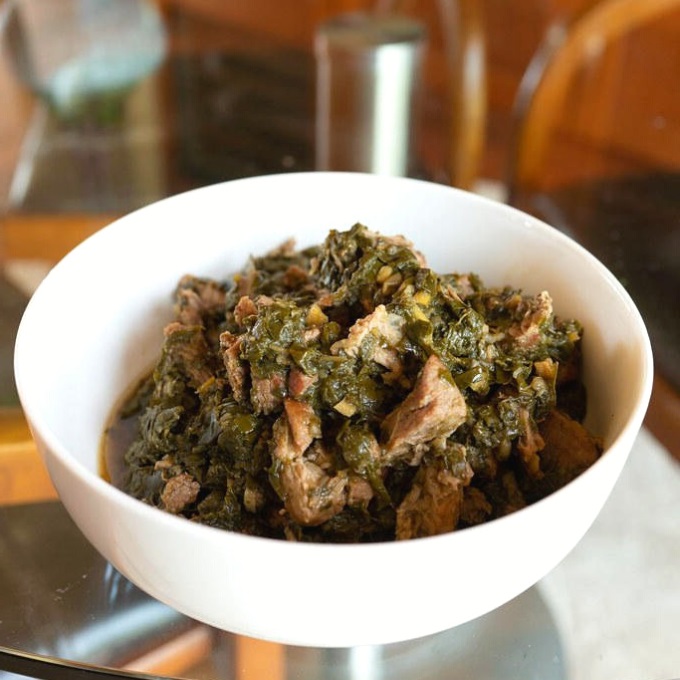
Luau (pronounced Lou-ow, just like the Hawaiian celebration) leaves are the large, elephant-ear-shaped leaves of the taro plant. These leaves are used in many ways in Hawaiian cuisine and are commonly cooked to a mushy consistency to create a stew.
Luau stew is traditionally flavored with salt. It can also be made with brown sugar and coconut milk or with onions, garlic, and ginger. The leaves tend to be the main ingredient, but sometimes pork, squid, or beef is also added.
This hearty stew is served with rice and poi. It has been a part of Polynesian culture since before the islands were populated.
If you’d like to make this traditional Hawaiian dish at home, try this luau stew recipe from Onolicious Hawaii.
8. Macaroni Salad
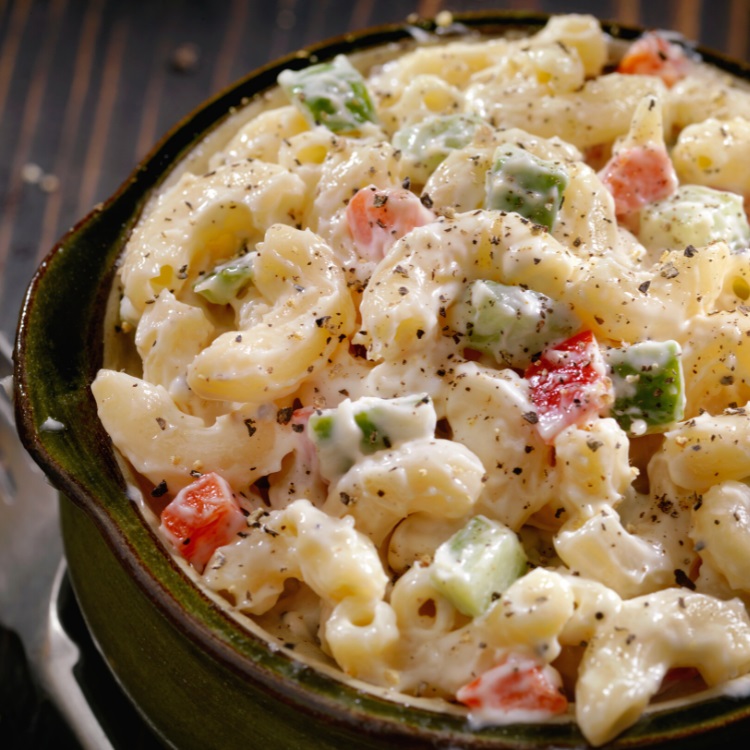
Macaroni salad may seem a little domestic to be on this list, but this isn’t your traditional mac salad. In Hawaii, this staple side dish is all about creamy simplicity. There aren’t a lot of ingredients, and there is never vinegar or mustard involved.
The basic formula for Hawaiian mac salad is well-cooked macaroni, mayonnaise, julienned carrots, salt, and pepper. Some versions add potatoes, celery, relish, crab, or onions. Compared to mainland macaroni salad, this version is somewhat sweet, mushier, and somehow more comforting.
Macaroni salad is always served as a side. It is common in plate lunches that include rice or poi.
9. Haupia
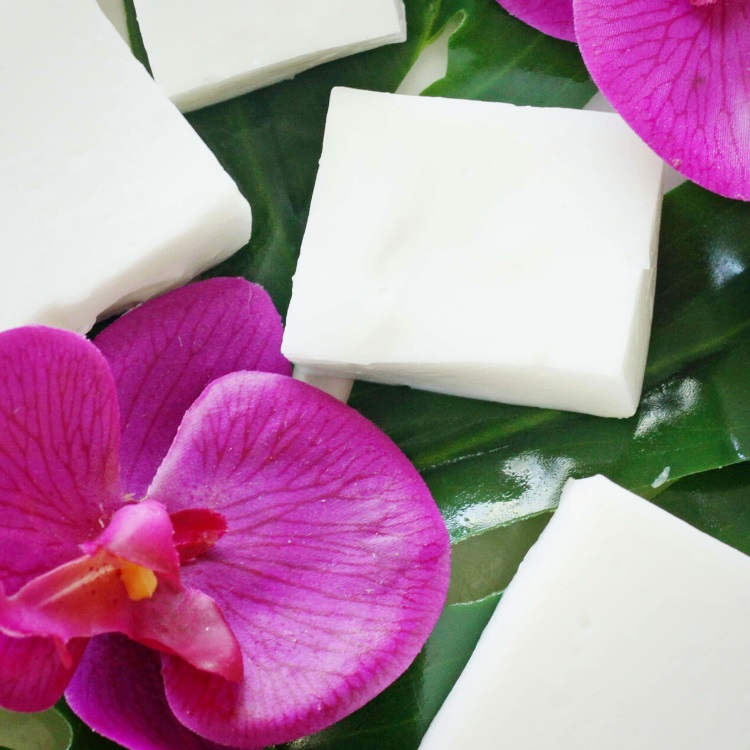
Haupia (pronounced how-pee-uh) is another sweet Hawaiian treat common on the islands. It is made by mixing coconut milk with sugar, water, and a thickening agent. This mixture is put into a rectangular pan and chilled to create a simple condensed white block.
This easy dessert has a similar consistency to jello and a powerful sweet coconut flavor. The large block is cut into small square servings and traditionally served on ti leaves. Haupia is a common dish at Luau celebrations.
Haupia can also be used as a pie filling or cake topper. Traditional preparations used pia (or arrowroot) as the thickener. Today, cornstarch is much easier to find and often substituted in recipes.
Check out this haupia recipe from Favorite Family Recipes if you’d like to make this delicious Hawaiian dish yourself.
10. Laulau
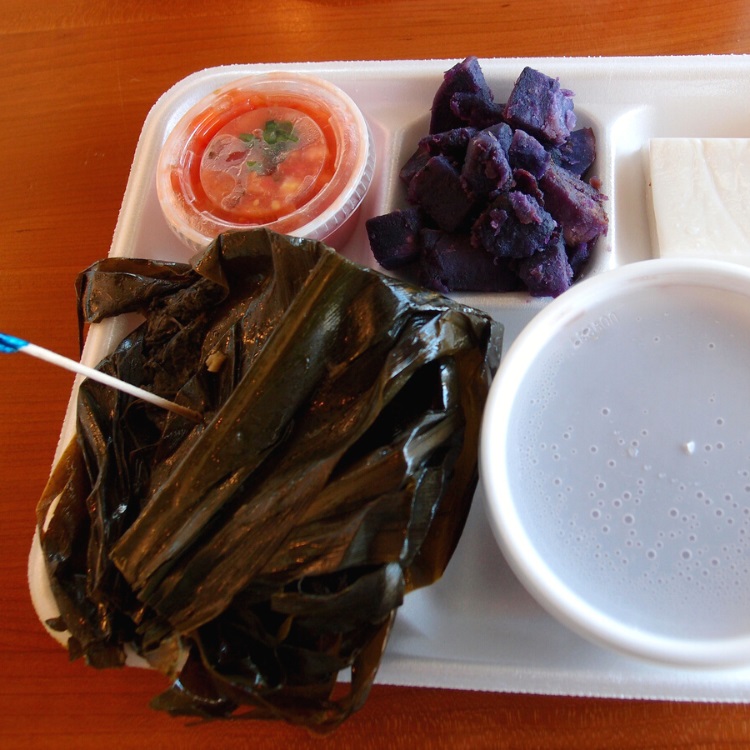
Laulau (pronounced with the “au” sounding like “ow”) is another popular luau (or taro leaf) dish you’ll find on Hawaii and other Polynesia islands.
Like the Hawaiian version of dolma, this main dish consists of meat wrapped in leaves and cooked. This cooking traditionally takes place in an underground oven called an imu.
The most popular stuffing for laulau is salted butterfish, but chicken, beef, and pork are also used. Sweet laulau features coconut cream as the filling.
This is another popular food to appear in Hawaiian plate lunches. It is typically served as the main dish alongside mac salad and rice.
11. Huli Huli Chicken
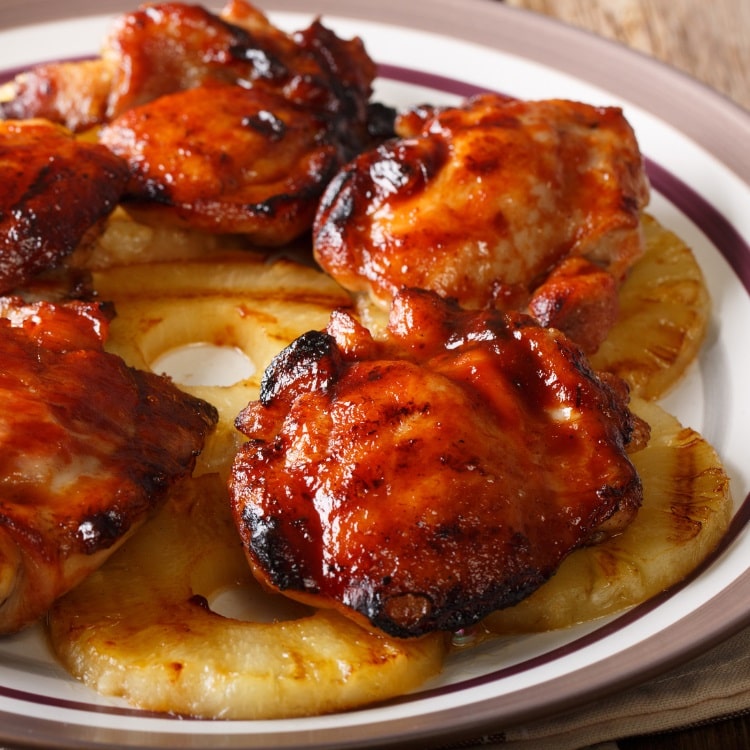
Huli Huli chicken (pronounced hoo-lee) is a sweet glazed chicken made popular in 1954 by a poultry company owner. The owner used his mother’s “teriyaki” sauce to barbeque chicken at a fundraiser, capturing an immediate fanbase.
The name huli huli comes from the Hawaiian word for turn. The chicken was originally cooked on a spit, and the crowd would call “huli” when it was time to turn the chicken and baste it. Today, huli huli is typically cooked on wide grills set over open fires.
The “teriyaki” sauce used on this chicken is a mix of many ingredients, including pineapple juice, ketchup, soy sauce, honey, sesame oil, and garlic. The recipe includes ingredients common in many parts of the world, but the resulting flavor is pure Hawaiian.
12. Shave Ice
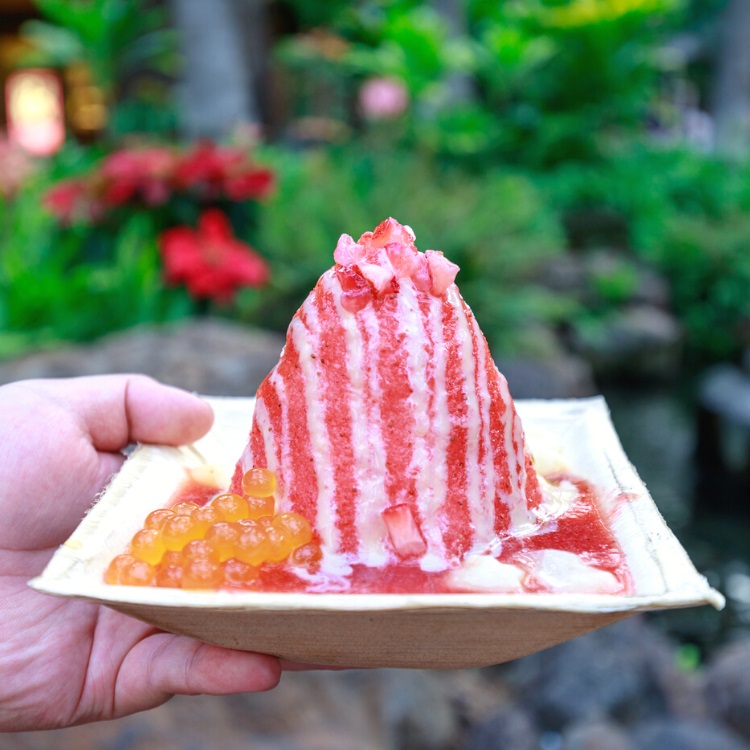
Shave ice is often mistakenly pronounced as “shaved” ice by tourists. But the lack of a “d” is important in distinguishing this Hawaiian specialty.
While American snow cones are made using crushed ice, this island treat uses thin slices of shaved ice that give it a different texture. The syrups that flavor the two, though, are fairly similar. But, Hawaiian shave ice trucks and shops tend to emphasize tropical flavors like pineapple, guava, lilikoi, and lychee.
Shave ice originated in Japan between the 8th and 12th centuries. It was a desert reserved for the wealthy who could afford ice, which had to be stored in mountain ice caves.
During the colonization of Hawaii, ice was an important commodity for settlers to help ease the transition from the mainland. Shave ice became a popular treat with wealthy plantation owners and is a favorite of locals and tourists today.
13. Kalua Pork
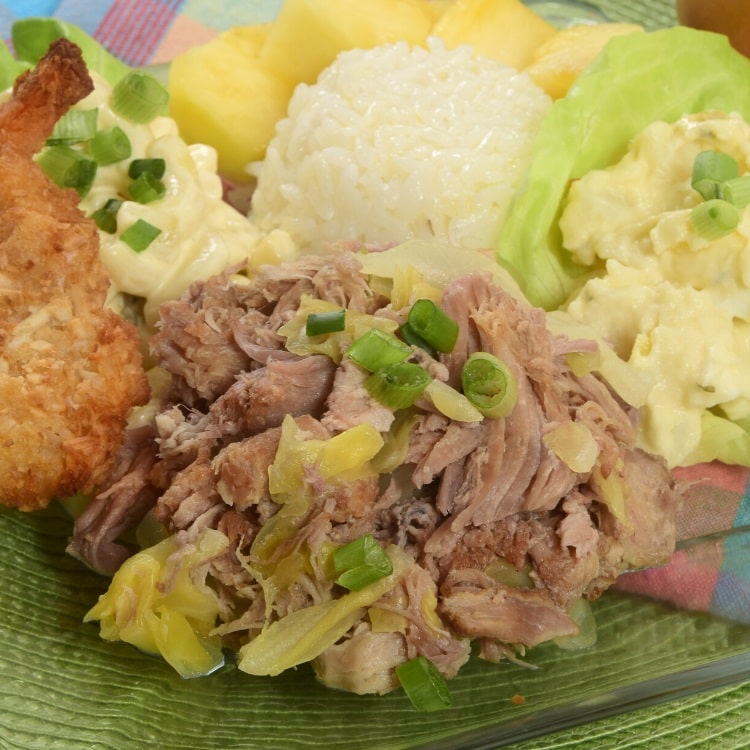
Kalua pork (pronounced kah-loo-uh) is a common meat dish served in Hawaii and has its roots in the pigs brought to the islands by the Polynesians. Like pulled pork, the meat is shredded before serving. Unlike pulled pork, it does not feature any sauce.
The only seasoning on kalua pork is Hawaiian salt. The deep, smoky flavor comes from the traditional method of cooking the pork butt in an imu, or underground oven. When cooked by more traditional means, such as in the crockpot, water and liquid smoke are typically added.
Kalua pork is a mainstay of Luau celebrations and is often featured as the main dish in Hawaiian plate lunches.
14. Manapua
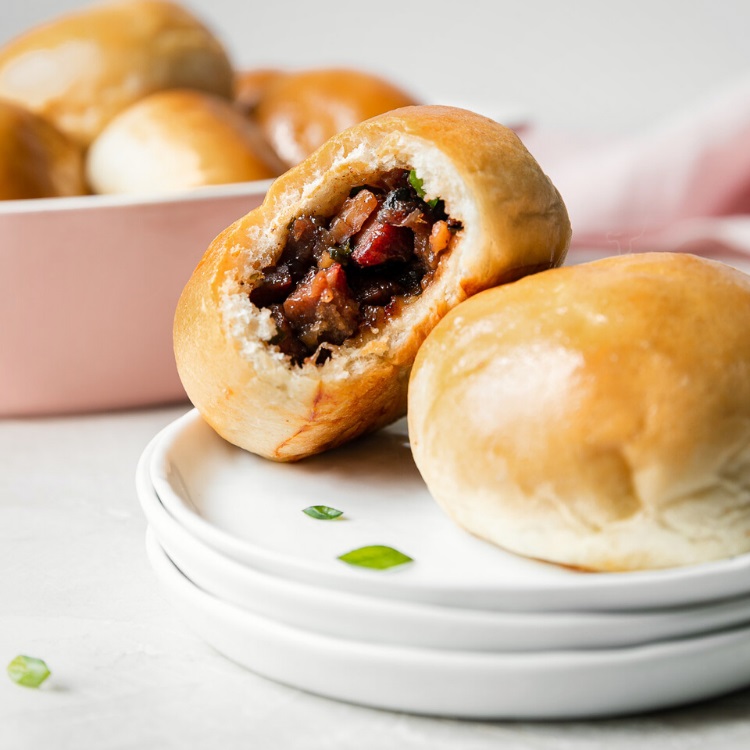
Manapua (pronounced mah-nah-poo-uh) is a common Hawaiian food very similar to Chinese cha sui bao, or pork-filled buns. On the islands, manapua consists of dark pink pork filling encased in a white bun. These buns are either steamed or baked.
While the filling in Chinese cuisine usually features barbeque pork, Hawaiian manapua uses diced pork marinated in a little saltpeter, which gives it its unique pink coloration. Compared to the Chinese version, these tend to be sweeter and larger, with plenty of doughy goodness.
Manapua is typically enjoyed as a snack. Pork filling is the most common, but you can also find buns filled with curried chicken, kalua pork, or purple yam for a vegetarian spin.
There are many ways to make manapua. Check out this manapua recipe from Plays Well With Butter for an easy-to-make and delicious Hawaiian dish.
15. Lomi lomi Salmon
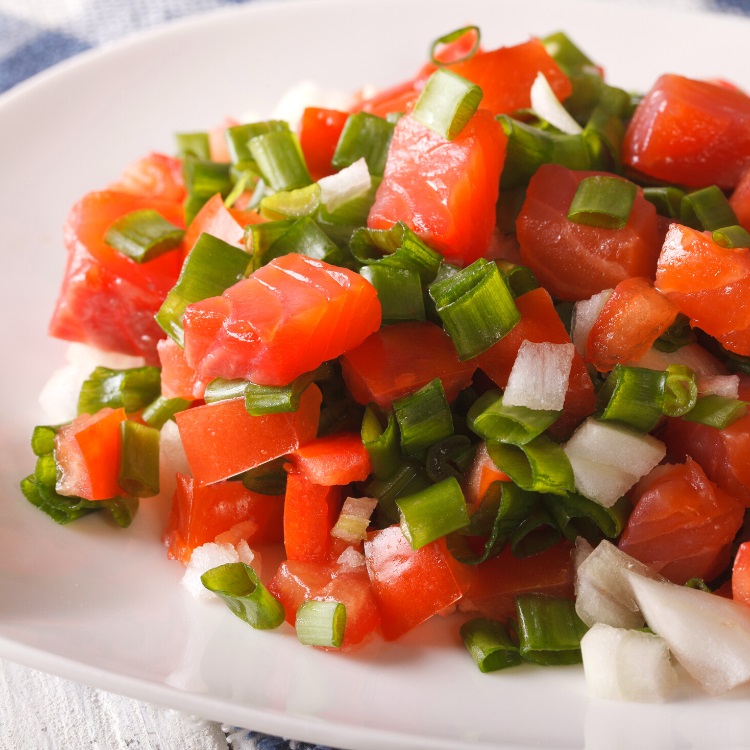
Lomi lomi salmon (pronounced low-mee low-mee) is a popular side dish in Hawaii. This cold dish consists of salted salmon, tomatoes, sweet Maui onions, and green onions. All the veggies are diced, and the salmon is shredded to create a salsa-like texture.
Lomilomi salmon, also called “lomi salad”, is an important dish at Luaus and celebrations, but it is also quite common on Hawaiian plate lunches. The dish is always served chilled and may even include crushed ice in the bowl.
The name comes from the preparation of the dish, which requires “massaging” the salmon bits together with the other ingredients. In Hawaiian, lomilomi means massage. This special handling is important to bring together the acidic sweetness of the tomatoes and onions with the salty, buttery salmon.
